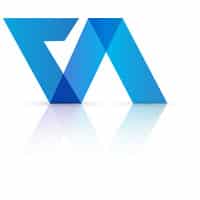Intrinsic Valuation
The intrinsic value of all cash-flowing assets takes into account both the potential for future cash flow and the associated risk. There are many experts who believe that trying to determine intrinsic worth in the face of so much future uncertainty is not just impossible, but also pointless. Even so, we have a lot in common. Despite this, we believe it is critical to go beyond market expectations and examine a company’s or asset’s inherent value. As a technique for assessing intrinsic value, the present value of future cash flow valuation model is examined along with other approaches and their disadvantages.
The value of each asset is unique unto itself. Even when we do all in our power, there are numerous instances in which it is just not feasible to have an accurate estimation of the value of anything. The present value of future cash flows (also known as DCF valuation) is a method that may be used to calculate the intrinsic value of an asset. This method takes into consideration both the changing value of money over time as well as the uncertainty of the predicted future cash flows.
Therefore, this is necessary to take into account all of a company’s current and prospective assets when evaluating it, as well as those that have previously been established. Keep in mind a possible last-minute issue. If a corporation is listed on a stock exchange, it should be able to create cash flow eternally.
Risk in Intrinsic Valuation
A lower risk-adjusted return is preferred over a higher one, but how can we accurately express and account for this difference? Discount rates in normal discounted cash flow valuation models let us convey our concerns about risk. For more risky financial flows, we use higher discount rates, and lower discount rates for less risky cash flows. To begin, let’s examine the differences between the risks associated with a stock investment and the risks associated with a business. It will next be detailed how equity and capital expenses are calculated.
Identifying and Measuring Equity Risk and Equity Cost
In equity investments, there are two elements that make it difficult to estimate risk and convert. The cost of equity is a measure of risk. Equity, unlike debt, does not have a clearly apparent interest rate. Investors’ assessments of risk might range significantly even among those who own shares in the same company. As a consequence, various investors may have different goals in mind when making financial commitments.
Using the equation for the firm’s intrinsic value, we can quickly summaries the four key concerns we must address in order to properly assess any business:
What are the company’s current investments expected to produce in terms of cash flow?
Is there any potential expansion that will offer value?
Are the predicted cash flows from both current and new projects hazardous, and what is the cost of financing them?
In what period of time will we be able to evaluate the worth of the company?
What Kind of Cash Flows Do Existing Assets Generate?
If a company has already made substantial investments, the first value inputs are the cash flows from these assets. In practice, this necessitates estimation of the following:
How much profit and cash flow the company produced accounting period in which these assets were used.
How much (if any) future growth is anticipated for these earnings/cash flows?
How long cash flows will continue to be generated by the assets
It’s possible that the current financial records have information in them that lets us answer all of these questions, but that information could not be decisive. It may be especially difficult to get cash flows if existing assets are not yet completely operational (infrastructure investments that have been finished but are not yet in full production mode) or if they are not being utilized in the most effective manner.
There may also be estimate concerns if the company in question operates in a dynamic industry, where profits on current assets fluctuate due to macroeconomic influences. When tasked with determining the value of a company’s current assets, it is necessary to stress one more element. In contrast to traditional accounting, which focuses on assessing how much has been spent in current assets, the issue we are attempting to answer is how much these assets are worth now, given their predicted future cash flows.
t is thus quite feasible for the value of existing assets to be much larger than, comparable to, or less than the amount of capital originally invested in them, depending on whether their earning capability has risen, remained constant, or declined since the initial investment.
Debt’s High Price In Intrinsic Valuation
The majority of a company’s operational risk is assumed by the firm’s equity investors, but in many cases, lenders to the company are also at risk of not receiving the payments they expect — interest charges and principal repayments. A “default spread” the risk-free rate is increased by lenders to cover this default risk; the larger the danger of default is assessed; the higher default spreads and loan costs are. Debt and equity may also differ in their tax status, although interest payments are often deductible from taxable income, cash flows that are generated after taxes are typically used to fund dividends and stock buybacks. In point of fact, the tax policies that govern many nations have a beneficial effect on debt and lower the costs of borrowing money for businesses.
Three factors are needed to calculate the total cost of debt for a company. One is the risk-free rate, which is also an input into the equity cost. For the most part, risk-free interest rates should be utilized to evaluate the cost of equity as well as debt. Debt costs should be calculated using the same long-term risk-free rate that equity costs are predicated on. The default spread is the second component.
According on the kind of company being studied, one of three methodologies may be used:
1 Assuming that the company has traded bonds that are still outstanding, the cost of debt is calculated using the current market interest rate (yield to maturity). Bonds issued by hazardous companies may be backed by their safest assets, but only if the bond is liquid and reflective of the firm’s total debt.
2 A reliable rating agency’s bond rating may be used to predict the default spread. In September 2008, any BBB-rated company would have used the default spread for BBB bonds of 2%.
3 A “synthetic” rating may be calculated using the company’s financial ratios if it is not rated and has unpaid debt. In order to estimate the rating based on simulations, one may use a simple but effective technique based just on a company’s interest coverage ratio (EBIT/interest expenditure); greater than lower interest coverage ratios produce better ratings.
When calculating the overall cost of the loan, the tax rate is the very last piece of information that is taken into consideration. Due to the fact that interest expenses bring about a reduction in your overall tax rate, it is more important to determine your marginal tax rate than your effective tax rate. When state and local taxes are added to the federal corporate tax rate of 35 percent, the marginal tax rate for US corporations in 2008 ranged from 25 to 41 percent, which is much higher than the average effective tax rate of 28 percent. In 2008, the marginal tax rate for US corporations was much higher.
Both of these factors combine to make a company’s after-tax loan charges much less expensive than its equity costs. Debt in a company is often less risky than stock since lenders have a first and contractual claim on the company’s cash flows, resulting in lower projected returns for investors. Second, debt provides a tax benefit that equity does not.
Intrinsic valuation and other concepts are explained in the below mentioned items

A COMPELTE GUIDE TO STARTUP VALUATION IN INDIA
A Complete GUIDE TO STARTUP VALUATION IN INDIA ALL GUIDES THE ULTIMATE GUIDE TO STARTUP VALUATION
-
- About CA Viswanathan V
- The Ultimate Guide to stat up valuation
- Scenario Analysis and Simulations: A Probabilistic Approach to Valuation
- Relative Valuation and Price Analysis.
- Real Options Valuation..
- Risk Free rate guide
- Price of Risk in Risky Ventures.
- Firms in Their First Stages of Development.
-
How to Value A Company: An In-Depth Guide To The Business Valuation Process
-
7 Major Startup Funding and Valuation Mistakes First-Time Entrepreneurs Make (and How to Avoid Them)
-
Startup Valuation Methods To Value Pre-Revenue Startup Valuation
-
Business Valuation Services – The Importance of Well negotiated deal with Venture Capital Firms
